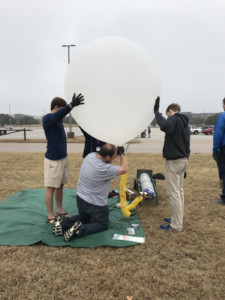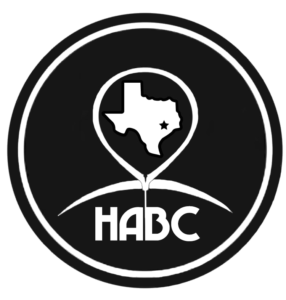HABC Website | Accomplishments and Future Goals
Purpose
The purpose of this club is to understand the nature upper atmospheric flight and near-space environment by means of affordable and readily available transportation. This can be easily be achieved by using high altitude balloons. These balloons are designed to carry up to five pounds of payload, as stated by the FAA, up to one-hundred thousand feet or higher. The projects taken on cover a wide range of studies: aerodynamics, atmospheric science, radio and telemetry, Earth and space science, chemistry, and even biology. The structure of balloon flights is straightforward: launch, flight, and recovery. The balloon’s primary lift fuel is helium, though hydrogen is considered to be a near future alternative as helium becomes scarcer and expensive to use. As easy as balloon flight may sound, careful planning is the key to a perfect launch. This includes plotting trajectories five to seven days in advance, monitoring local and upper atmospheric weather, and physically being able to recover the payload in any terrain. Additionally, considerations that factor into a balloon launch such as how much helium is needed or how the payload’s weight should be distributed along the rig are always taken into account to ensure quality in balloon flight performance.
Visit the HABC’s website.
Background
This club was established as a result of many successful balloon launches made in previous years at Texas A&M University. Balloon launches took into effect in the Department of Aerospace Engineering after a call for a group of students was made to participate in an expedition in Alaska to study the Aurora Borealis. This project was addressed in a speaker presentation by Dr. Ben Longmier of Project Aether and University of Houston in a weekly AIAA meeting. This study involved attempting to launch high altitude balloon with student made science experiments into the north lights. From there on launches back at Texas A&M University and local destinations has become almost a biweekly to weekly basis event with the help and support of our advisor, Dr. Sharath Girimaji of Texas A&M’s Aerospace Engineering Department, who provides guidance and necessary support to continue the team’s projects and endeavors.
Methods
Balloon flights consist of well thought out procedures that are taken on together as a team. For a typical balloon flight, the payload must meet FAA standards of a maximum of five pounds and must be radar reflective. The payload, according to its design and purpose, must be able to handle the surrounding environment throughout the whole flight. All payloads are fitted with tracking devices to monitor and ensure proper recovery once in its descent stage. Balloons are hand-filled with helium and hand- released once after inflation. For every flight, there is at least one team that launches the balloon and another team that recovers it. Parachutes are used for the controlled descent back to the surface.
Visit our Accomplishments and Future Goals.
Social Media




